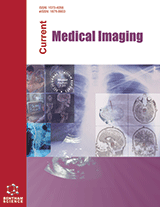Abstract
Background: Nasopharyngeal adenoid hypertrophy (NAH) is a frequent incidental finding on head and neck imaging in children.
Objective: The study aimed to investigate magnetic resonance imaging (MRI) findings and prevalence of NAH after Bone Marrow Transplantation (BMT) in children with hemato-oncological diseases.
Methods: Between February 2013 and January 2018, BMT was performed in 202 pediatric patients. Forty-three patients (20 girl, 23 boy; age range, 1-19 years; mean age 9.4 years) who underwent at least two head and neck MRI before and after BMT were included in the study. Posttransplantation NAH (PTNAH) was considered when anterior-posterior (A-P) diameter of adenoid increased on post-BMT MRI relative to the previous MRI performed before BMT. Adenoid was evaluated for symmetry, cystic and septal content, signal intensity and contrast enhancement.
Results: Fourteen (32.5%) of 43 patients demonstrated PTNAH (7 boy, 7 girl; age range, 1-19 years; mean age, 10.5 years). Six (43%) of 14 patients were diagnosed with thalassemia. Six (50%) of 12 patients with thalassemia revealed PTNAH. The mean time intervals were 116 days and 213 days, respectively. The mean A-P diameter of adenoid was 5.2 mm before BMT which was 7.8 mm after BMT. All lesions were symmetric, isointense on T1-weighted (W), mild hyperintense on T2W and marked hyperintense on T2W TIRM images with slight contrast enhancement. Most of the lesions showed diffusion restriction and multiple longitudinal septa. Only one lesion revealed retention cysts.
Conclusion: NAH is a common finding after BMT in children. Awareness of imaging characteristics is important to prevent invasive procedures like biopsy and surgery.
Keywords: Post-transplantation lymphoproliferative disorder, nasopharynx, adenoid hypertrophy, bone marrow transplantation, magnetic resonance imaging, hemoto-oncological disease.














